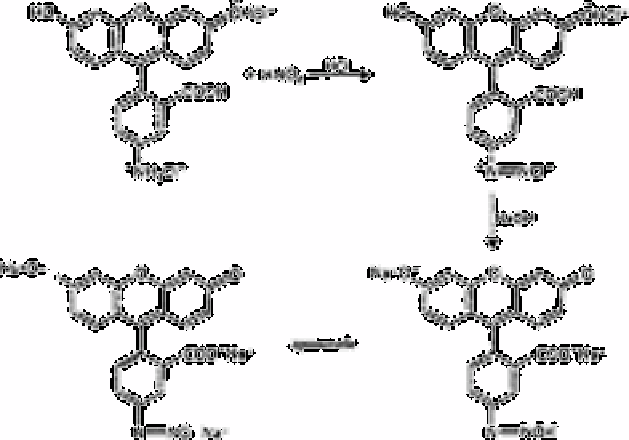Chemistry Reference
In-Depth Information
2.63.2.1
Methods based on redox reactions
A method based on the increase in the fluorescence intensity of 5-aminofluorescein when
it reacts with nitrite has been proposed for the determination of this anion [522]. The
reaction has not been studied, but the authors propose the following mechanism (see
over).
The shape of the calibration graph depends on the dye concentration and the nitrite
working range. In general, as the 5-aminofluorescein concentration decreases, the
calibration graph curves. It is conceivable that there is another reaction or other reactions
present that affect the fluorescence intensity.
Other methods for the determination of nitrites are based on the formation of triazoles.
Thus, nitrite has been determined with 2,3-diaminonaphthalene, which is transformed
into 2,3-naphthotriazole [497].
Nitrate does not interfere in this method but it can be determined by reduction to nitrite
with hydrazine sulphate [523].
A sensitive fluorometric method has been proposed for measuring nitrite ions based on
the diazotisation of
p
-chloroaniline and coupling with 2,6-diaminopyridine [519]. The
resulting azo product then is further derivatised with ammoniacal copper(II) sulphate to
produce a highly fluorescent triazole compound in acidic media that is extracted into
benzene.




Search WWH ::

Custom Search